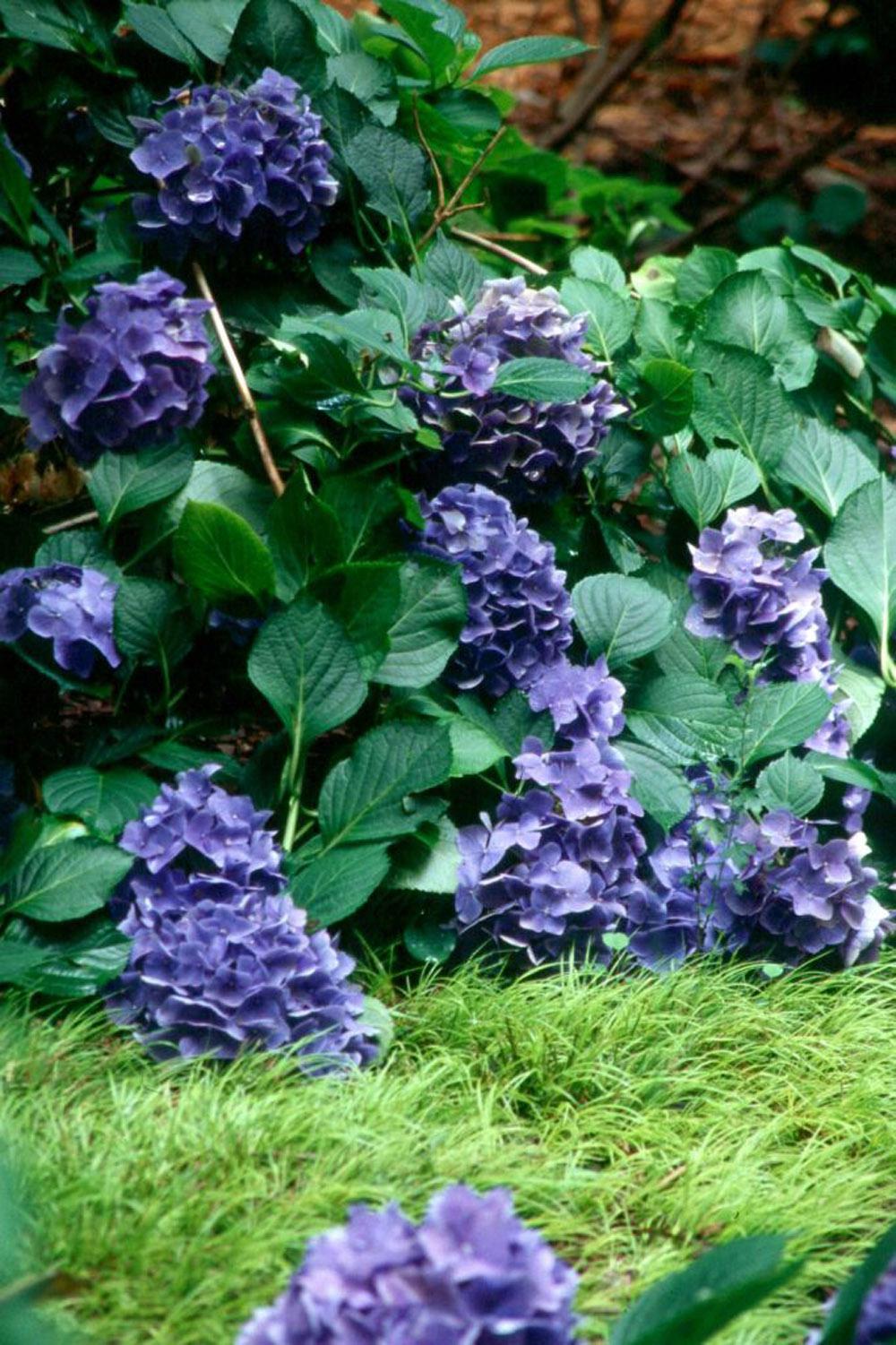Information Possibly Outdated
The information presented on this page was originally released on September 1, 2003. It may not be outdated, but please search our site for more current information. If you plan to quote or reference this information in a publication, please check with the Extension specialist or author before proceeding.
Plant Minimus for a street of gold
By Norman Winter
MSU Horticulturist
Central Mississippi Research & Extension Center
Earlier this summer I had the opportunity to see a planting of a Japanese sweet flag variety that absolutely mesmerized me. I shot photo after photo and never captured its beauty to my satisfaction.
I kept wondering, "Why didn't I think of that?" The planting is simple, magical-looking and really easy for all of us to duplicate. The setting was a woodland garden under tall pines with a few hardwoods. Beneath the trees were French hydrangeas with their large, mop-shaped flowers in a most striking blue. Intertwined through the area and around the hydrangeas was a super dwarf variety of Japanese sweet flag called Minimus aureus, which means miniature gold.
Most of us would never consider a ground cover of Japanese sweet flag as a companion for blue hydrangeas, but I promise the look is exceptional.
The Minimus aureus only gets around 3 inches tall before gently curving back toward the ground. What makes it extraordinary in this setting is that its leaves are a brilliant chartreuse gold. So picture the large blue hydrangeas laying forward on the golden grass, a perfect complement.
As the sun would occasionally send a ray or two through the trees to hit the hydrangeas and the grass, it almost looked like royal blue along a street of gold.
Japanese sweet flag is usually sold in abundance in the fall, thanks to the Proven Winners Fall Magic line of plants. Sweet flag is known botanically as Acorus gramineus. It is actually in the lily family.
Wet feet will not be a challenge for the dwarf sweet flag. It tolerates excess moisture and thrives near water features, but it is resilient enough to be grown in upland garden soil, too. Dwarf sweet flag is grown for its striking variegated, grass-like foliage that lights up a bubbling brook, garden or a large mixed container. Solid green selections are also available.
Choose a location with filtered light or morning sun and afternoon shade. The soil should be fertile, organic rich or loamy, and moisture retentive to obtain the nice partnership with hydrangeas.
Tight clay soils will not make you, or the sweet flag, very content. Amend with 3 to 4 inches of organic matter like compost or humus if needed. Space green selections 12 to 18 inches apart; 10 to 14 inches apart for variegated forms.
Given adequate moisture, the dwarf sweet flag is an easy plant to grow, so give supplemental water during dry periods. Feed in late winter with a light application of a slow-release fertilizer such as a 12-6-6 containing minor nutrients.
Should foliage get unattractive, cut back in late winter before the new spring growth. In moist soils, growth will spread similarly to that of an iris, so divide as needed. Variegated forms spread more slowly.
In addition to companion planting with hydrangeas, the dwarf sweet flag is also good for using tucked among rocks in creek beds, whether dry or flowing with water. They also work well next to water gardens or ponds. They are a good choice for pocket planting in mixed containers. Try combining with bamboo, umbrella plants and Louisiana iris.
Ogon, with its bright gold and green variegated leaves, is one of my favorites. Look also for the creamy white Variegatus selection. Licorice, a release from the U.S. National Arboretum, gives off a nice aroma when handled.
But do consider the super dwarf Minimus aureus. It definitely deserves a spot in the landscape.



